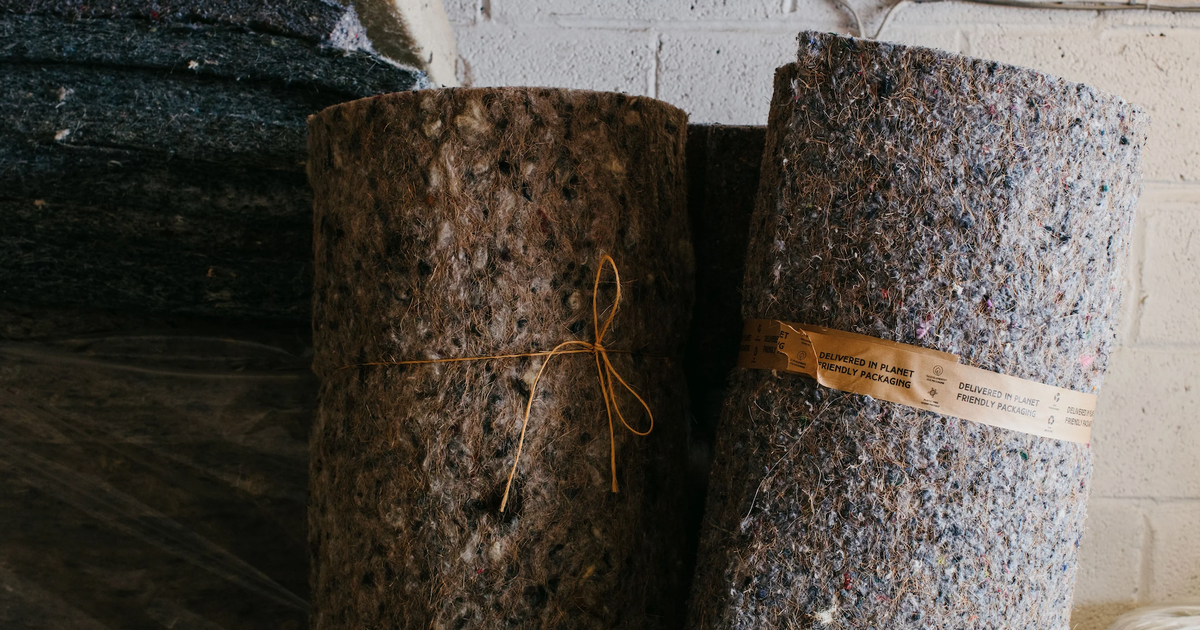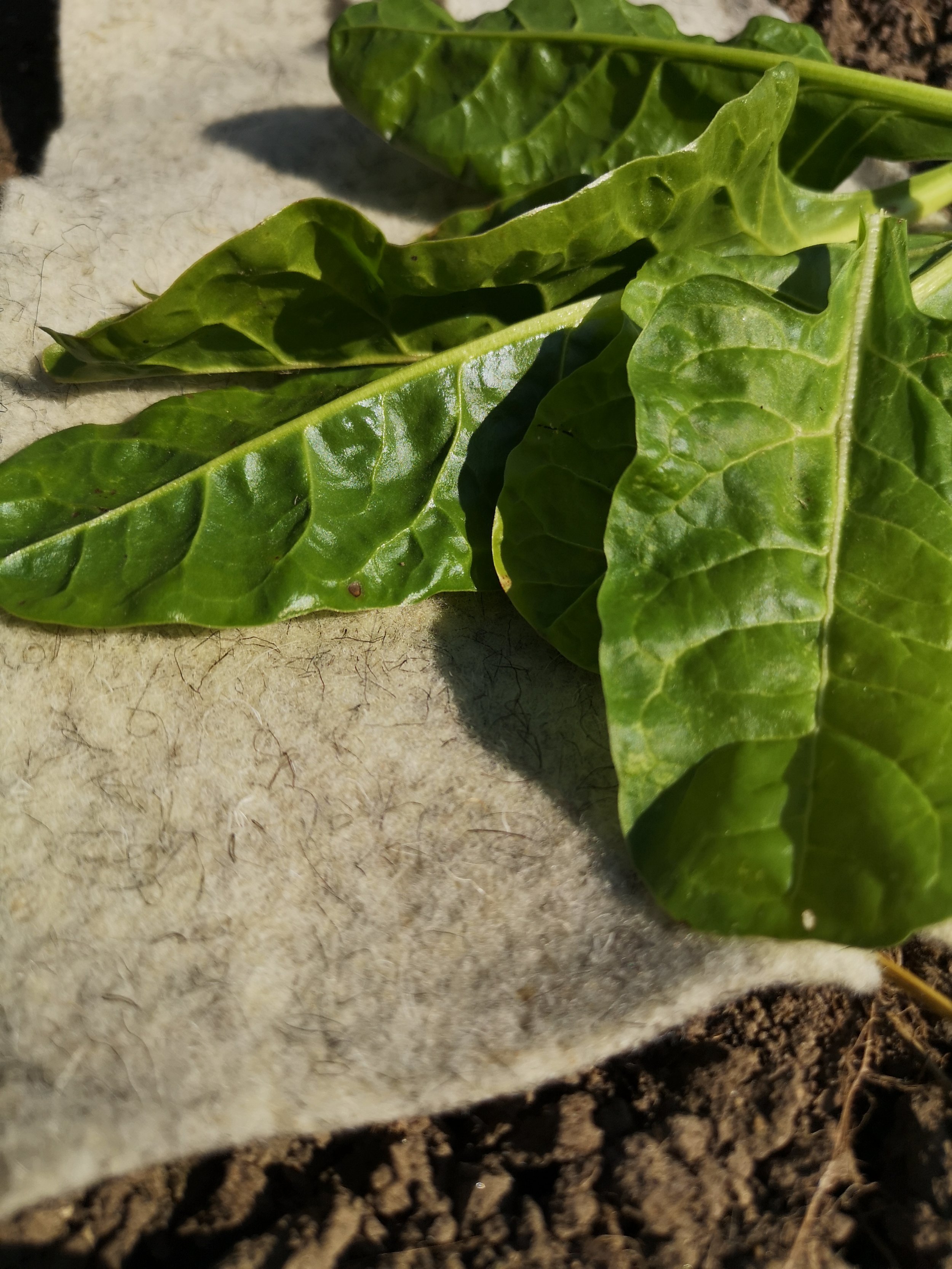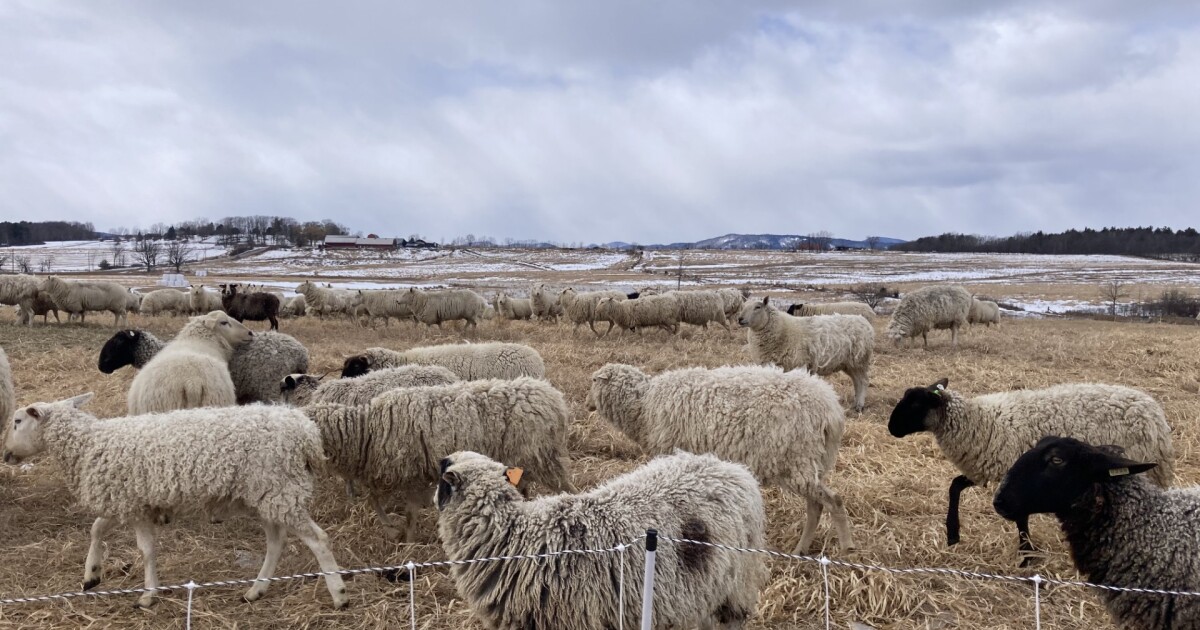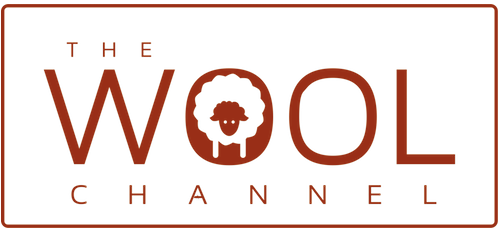The Wool Wire | March 27, 2025
Going batty for wool batting in our walls and on our beds and our garden beds. Plus, celebrating the history of sheep in Vermont.

News snippets from the wool world
Hello, my friends,
When people think of wool, they usually think of finished items such as socks and sweaters. They might even think of carpets and rugs. But they rarely think about batting.
Wool batting is what you get when you pull a large, flat sheet of carded wool fibers straight off the carding machine. It's not woven, it's not knitted, it's just a thick layer of wool fibers that have been more or less aligned in the same direction.
Depending on its thickness, batting can be used for anything from quilts and comforters to mattresses and building insulation. Add some moisture and agitation, and your batt transforms into a cohesive sheet of felt that can be used for more applications.
But first, let's talk about insulation.
Hooray for Havelock
The leader of the wool insulation movement in the United States is Havelock Wool, based in Nevada. Last year, I told you how local news affiliate KOLO TV visited Havelock's operations and profiled CEO Andrew Legge. This time, Legge has come into the studio for a deeper talk about the business and about why and how wool is such a perfect material for insulation.

Shout it from the rooftops, Andrew!
Going batty for blends
Some batting can contain fibers other than wool. In Scotland, the Midlothian-based Sisalwool has just received a hefty investment to boost production of its insulation that combines wool, cotton, and sisal plant fibers, all of which are recycled.
“The new funding will support Sisaltech’s plans to increase manufacturing capacity and explore new market opportunities—its growth will also deliver a boost to supply chains, including Scottish sheep wool and help develop the circular economy.”

Sweet dreams at St. Peter
Here in the United States, one of our oldest wool processors is St. Peter Woolen Mill in Minnesota. Now certified organic, the mill specializes in making wool batting as well as wool comforters, pillows, and mattress toppers and pads. It also provides custom carding services for others.
I was particularly excited to see that they also offer a service that used to be far more common than it is today: You can send them your old wool comforter, mattress topper, or pillow, and they'll re-card the wool and re-stuff it for you. From old to new, how brilliant is that?
If you'd like to see what batting looks like right off the carding machine, and meet the man who's been running the mill for several decades, check out this installment of Finding Minnesota by CBS affiliate WCCO.
Well done, WoolGrown!
Not all wool batting is destined for our beds or for our walls. A small, Ontario-based startup called WoolGrown is doing wonderful things for Canadian wool in horticulture.
WoolGrown sources Ontario-grown wool and turns it into felted wool seed-starting strips, plant pots, and horticultural felt. WoolGrown also transforms waste wool into valuable garden pellets and offers custom pelletizing services so that other Canadian wool growers can do the same.
WoolGrown is a 100% felted wool fabric, grown and manufactured in Ontario. Wool is a naturally biodegradable material that could become a viable sustainable alternative to plastic-based growing fabrics. WoolGrown isn’t just environmentally friendly— it has the potential to contribute to soil health and become a positive farming input.

Ewes on the air
For this last story, we step away from wool batting to admire the bucolic, sheep-dotted landscape of Vermont. Over the past month, CBS affiliate WCAX Channel 3 has been exploring Vermont's rich and varied animal history in a series called Animal Hour—and last week, they turned their attention to sheep.
If you're in the mood to get lost in a good story, this is a wonderful place to do it.

On that note, I'll let you go. Thanks, as always, for your readership and your support.
Until next time,
Clara
The Wool Channel Newsletter
Join the newsletter to receive the latest updates in your inbox.








